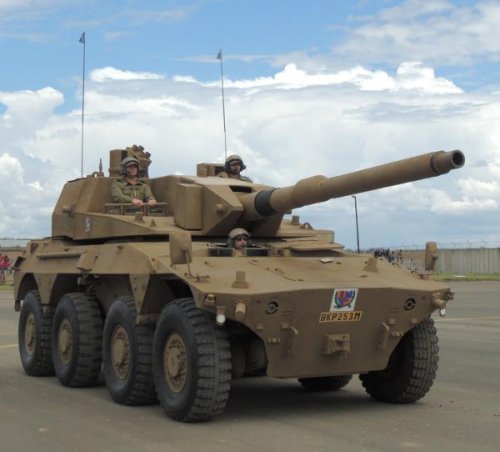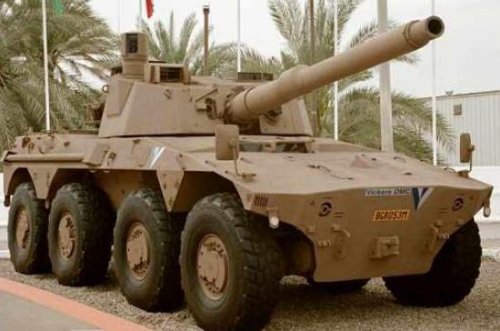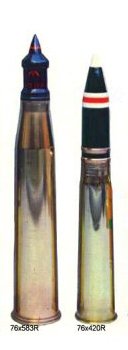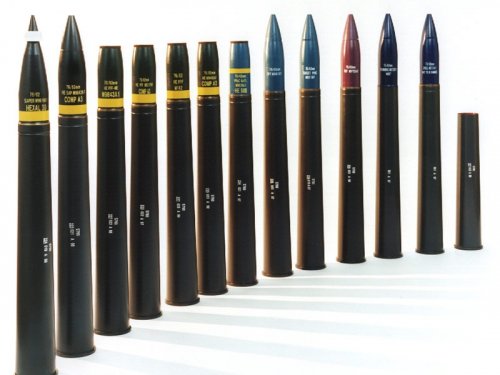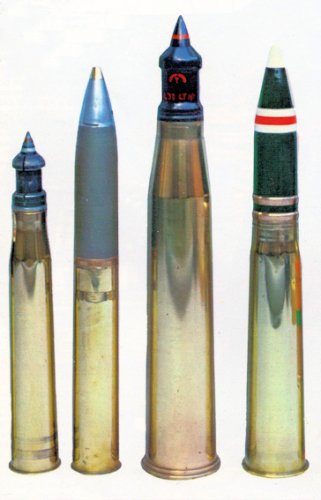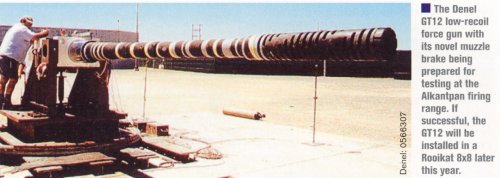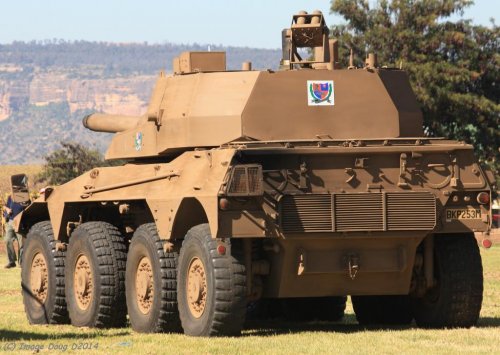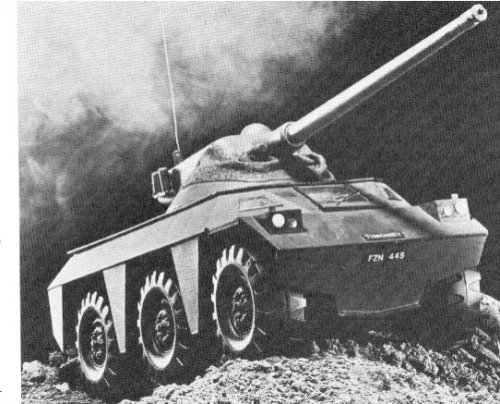- Joined
- 27 March 2006
- Messages
- 1,793
- Reaction score
- 1,309
Speaking of the Rooikat armament....
That new version that came to light recently...the one below, looks like it has a 105mm cannon, especially when compared to the vanilla 76mm equipped version, and the 105mm equipped version shown in that middle east arms show years back.
Before that, the only 105mm equipped Rooikat, as mentioned above, looked like the usual Rooikat, but with slight differences, as seen in pic 2.
We also know that a 120mm was designed for the Rooikat.
It would be interesting to know the story behind this recently made public vehicle with the new turret, Grintek LEDS active defence system, and sensors/nozzles....
That new version that came to light recently...the one below, looks like it has a 105mm cannon, especially when compared to the vanilla 76mm equipped version, and the 105mm equipped version shown in that middle east arms show years back.
Before that, the only 105mm equipped Rooikat, as mentioned above, looked like the usual Rooikat, but with slight differences, as seen in pic 2.
We also know that a 120mm was designed for the Rooikat.
It would be interesting to know the story behind this recently made public vehicle with the new turret, Grintek LEDS active defence system, and sensors/nozzles....

